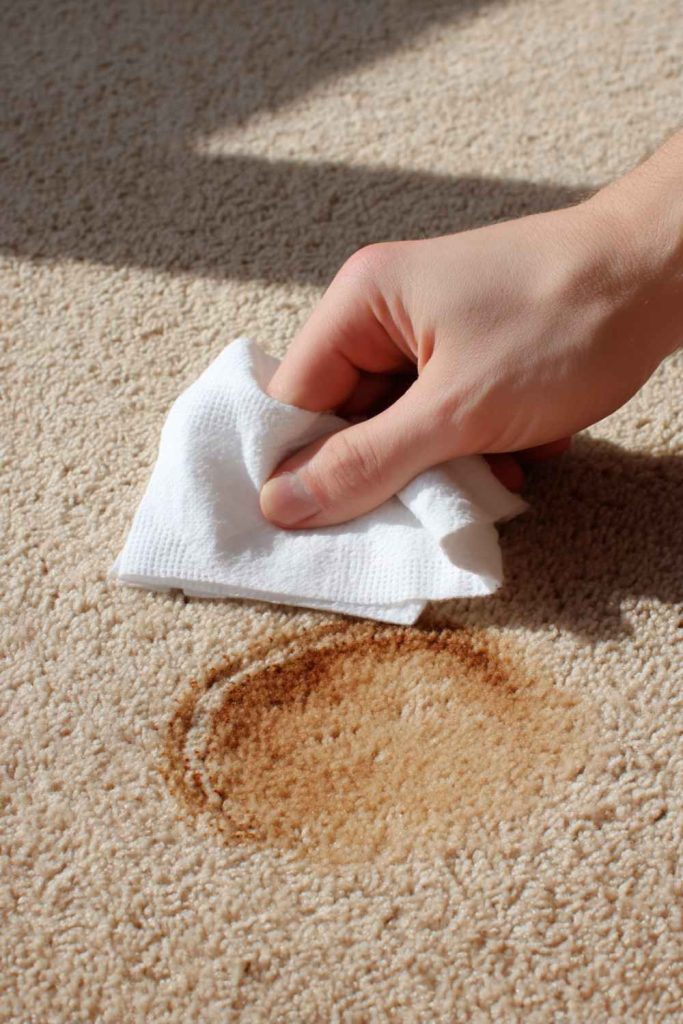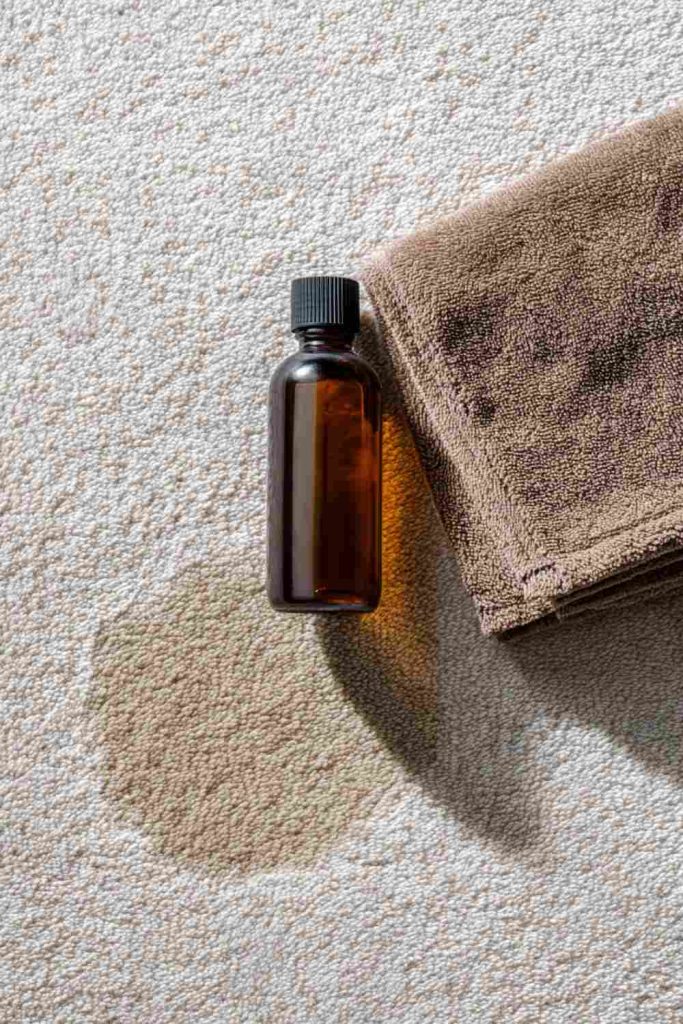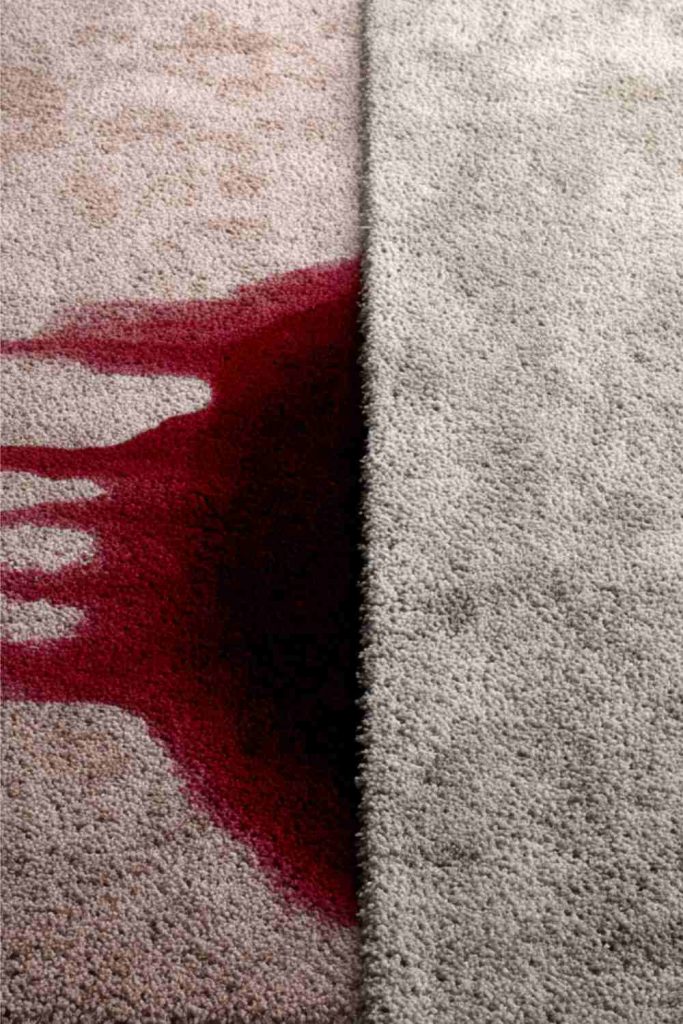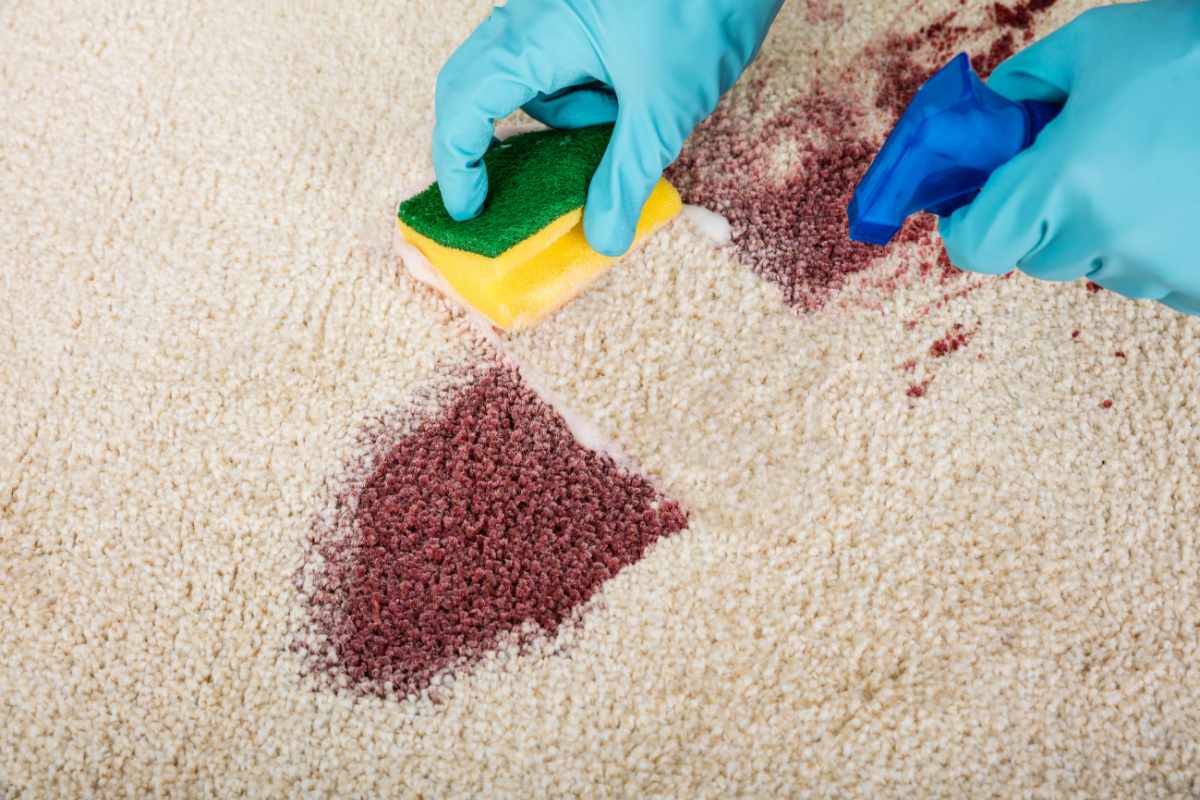Carpet is cozy, warm, and makes a house feel like home, until a stubborn old stain ruins the picture. Maybe it’s a splash of red wine from last year’s dinner party, or the coffee that tipped over when you rushed out the door.
The thing about stains is this: the longer they sit, the more they dig in, and suddenly what was once a small mishap becomes a permanent eyesore. But here’s the good news, most old carpet stains can be treated. With the right techniques, some patience, and a little know-how, you can bring your carpet back to life.
Understanding Old Carpet Stains
So what makes a stain “old”?
- Time: days, weeks, or even months of sitting undisturbed
- Effects: pigments seep into fibers, liquids saturate the backing, and dirt mats into the pile
Common culprits that harden over time:
- Protein-based: blood, sweat, pet urine
- Tannin-based: coffee, tea, wine
- Dye-based: ink, food coloring
- Oil or grease-based: cosmetics, butter, cooking oil
Why they’re tough to beat:
- Oxidation changes the stain’s chemistry, locking it in
- Fibers absorb and hold onto residue
- Earlier “scrubbing” or the wrong chemical can actually make it worse
Carpet materials matter too:
- Synthetic fibers (like nylon, polyester) are more forgiving
- Wool is sensitive, vinegar and harsh chemicals can damage it
- Light carpets risk bleaching; dark carpets risk patchy discoloration
- Dense or loop piles trap more residue

First Things First: Preparing Before Treatment
Jumping in too quickly can do more harm than good. Slow down and set yourself up for success.
- Assess the stain
- Try to figure out what caused it (coffee vs. ink makes a big difference)
- Always test a small hidden corner for colorfastness before using solutions
- Remove residue
- For crusted bits, scrape gently with a spoon or dull knife
- For wet leftovers, blot, never rub
- Prep the area
- Vacuum or sweep up dirt around the spot (otherwise you’re grinding dirt deeper)
- Gather supplies
- Soft microfiber cloths or paper towels
- Spray bottle for solutions
- Soft brush (old toothbrush works fine)
- Gloves, and ideally, a wet vacuum or steam vac for extraction
Proven Ways to Remove Old Carpet Stains
Home Remedies You Can Try Right Now
- Vinegar + Baking Soda
- Sprinkle baking soda over the stain
- Spray a mix of equal parts vinegar and water with a few drops of dish soap
- It fizzes, let it sit for 5–15 minutes
- Gently scrub, then blot dry
- Hydrogen Peroxide (for light carpets only)
- Use 3% solution or weaker, diluted with water
- Spray lightly, let sit ~5 minutes
- Agitate edges toward center, then blot or use a steam vac
- Warning: can bleach dark fibers, patch test first
- Club Soda
- Pour directly over the stain, let bubble 10–15 minutes
- Blot, repeat if needed
- White Vinegar + Lemon Juice
- Best for juice or soda stains
- Vinegar first, then lemon juice if needed
- Scrub gently, blot until dry
- Dish Soap + Warm Water
- Mix a tiny squirt of mild dish soap into warm water
- Apply, blot repeatedly (great for oil-based stains)
- Borax Paste
- Mix borax with warm water (and soap if desired)
- Apply, let sit, rinse/blot
- Excellent for pet stains and odors
Commercial & Enzyme Cleaners
When DIY isn’t enough, store-bought cleaners step in.
- What to look for:
- Enzyme formulas (great for blood, pet accidents, food proteins)
- Low-residue, non-alkaline to prevent re-soiling
- Safe for your carpet fiber type
- Popular options people swear by:
- Folex Instant Carpet Spot Remover (affordable and surprisingly effective)
- BISSELL Pet Stain & Odor Remover for pets
- Resolve or OxiClean Carpet & Area Rug Cleaner for coffee, red wine, general use
Professional Methods & When to Call for Backup
- Steam cleaning / hot water extraction
- Uses heat, water, and suction to pull out deep stains
- Ideal for big, widespread discolorations
- Dry cleaning / low moisture
- Safer for delicate carpets that can’t handle soaking
- When you really need a pro:
- Stains that cover a large area
- Stains that survived multiple attempts
- Carpets that haven’t been cleaned in years (12–18 months is the typical pro-recommended cycle)

Step-By-Step: Common Stains and How to Beat Them
Coffee or Tea
- Blot right away if fresh; for old stains, mix ¼ tsp non-bleach detergent or white vinegar with 32 oz water
- Apply solution, work from the edges inward
- Rinse with water, blot dry
Red Wine
- Pour white wine or club soda to dilute
- Follow with vinegar/lemon juice
- Finish with an enzyme cleaner or Resolve/OxiClean spray
Blood & Pet Urine
- Always use cold water (hot will set it)
- Blot, then apply enzyme cleaner
- Hydrogen peroxide (3%) works on stubborn marks, but test carefully
- Rinse thoroughly to remove protein traces
Oil, Grease, and Ink
- Apply dish soap + warm water for grease
- For ink/dye stains, use rubbing alcohol sparingly (dab, don’t pour)
- Avoid heat until stain is completely gone

Keeping Your Carpet Cleaner Longer
Once you’ve worked so hard to clean it, the last thing you want is for stains to come back.
- Blot never scrub. Scrubbing pushes the mess deeper.
- Rinse with water after any cleaner. Residue attracts more dirt.
- Don’t over-wet. Too much water seeps into the backing, causing mildew.
- Dry completely. Use towels, fans, or even stack paper towels with a heavy book on top to soak up moisture.
- Vacuum weekly. Stops dirt from grinding in.
- Deep clean every 12–18 months. More often if you’ve got pets or heavy foot traffic.
- Protect it. Use doormats, carpet protectors, and consider making your living room a shoe-free zone.
Real-World Examples
- That Carpet Guy (Australia): Removed old red wine and coffee stains using baking soda + professional extraction. The before-and-after photos showed a carpet that looked ruined brought back to near-new condition.
- Good Housekeeping Lab Tests: Compared different stain removers on old vs. fresh stains. Products like Folex and BISSELL Pet formulas consistently outperformed general cleaners on set-in messes.
FAQs
What counts as an old stain?
Once a liquid dries and bonds with the carpet backing, often overnight.
Can every old stain be removed?
Not always, some dyes chemically bond. You may lighten it dramatically but not erase it.
Is vinegar safe for all carpets?
Not wool. Works on most synthetics but always patch test.
Can I use hydrogen peroxide on dark carpets?
Risky, it can bleach. Stick to light carpets unless you test first.
Are enzyme cleaners better?
For organic stains, absolutely. They digest proteins and odors instead of masking them.
How often should I deep clean?
Spot treat as soon as stains happen; professionally deep clean every 12–18 months.

Conclusion
Old carpet stains feel like battle scars on your home, but they don’t have to be permanent. Whether you’re armed with vinegar and baking soda or calling in a professional, there’s almost always a way to make that blotch less noticeable, or even disappear completely. The trick is using the right method for the right type of stain, and being patient enough to repeat treatments when needed.
Sometimes, of course, a stain wins. When it does, replacing a carpet square or adding a well-placed rug can be more practical than endless scrubbing. But for most stains, with the right mix of DIY grit, smart products, and a little persistence, your carpet can live to see many more family dinners, coffee mornings, and movie nights without showing the evidence.


